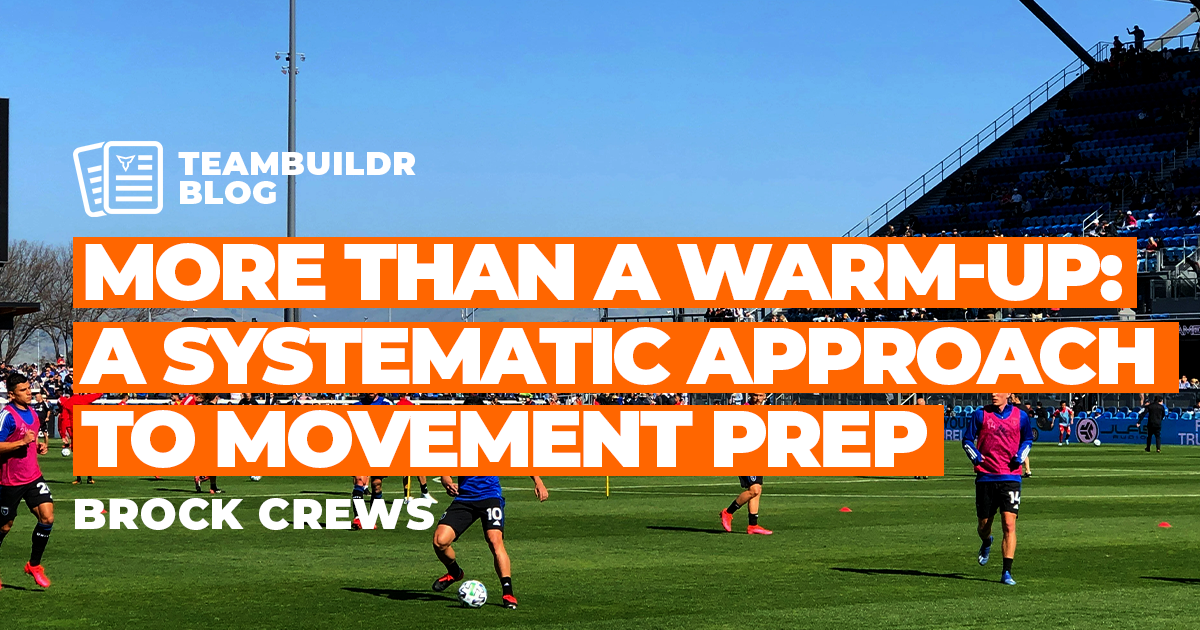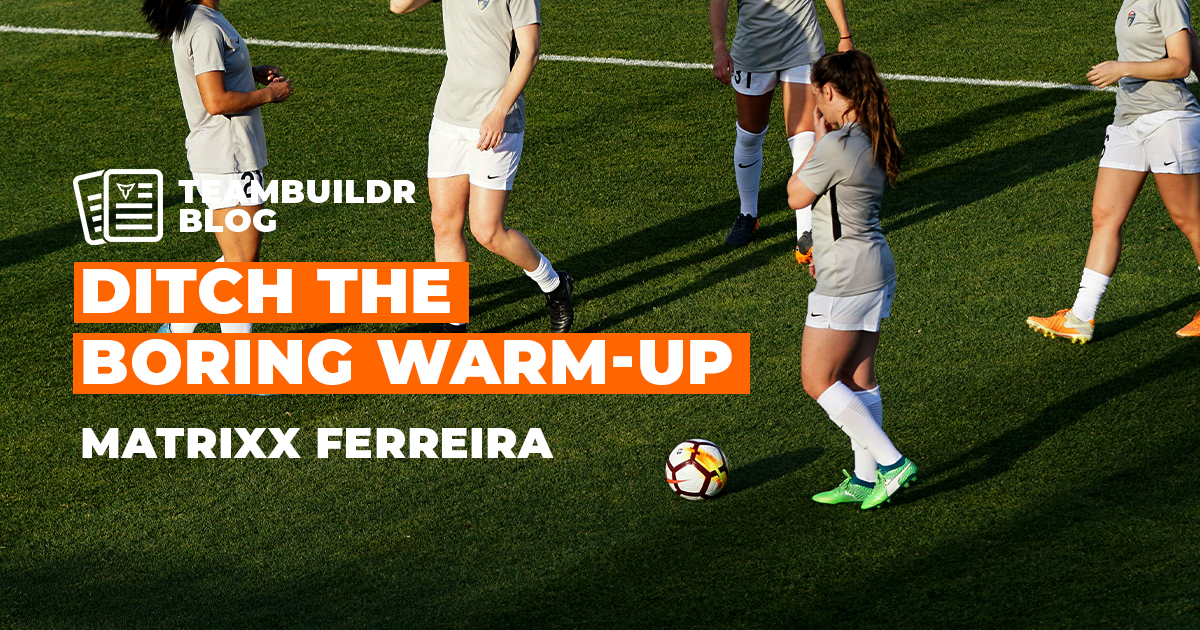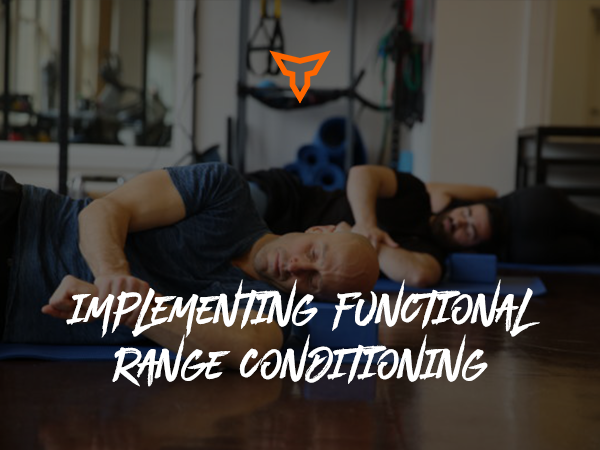Creating Athleticism Through a Proper Dynamic Warm-Up
I want to discuss a simplified version of preparation that aids in athletic development in a timeframe that ranges from 5 minutes to 20 minutes each day.
I am referring to a warm-up. The warm-up is predicated on preparing the body for various core movements in the specific training session, practice, or game of that day. This article will give an overview of my points of emphasis when implementing a warm-up routine for adolescents that will help build athleticism. Because warm-ups can often be overlooked or become susceptible to "going through the motions," I will premise with an argument for the need to address how implementing an effective warm-up routine is more necessary than ever when training today's young athletes.
Generally speaking, athletes today were born into a world which provides more distractions from engaging in physical activities that can naturally aid physical development. Parents want the best for their kids, but often fail to recognize the developmental aspects required to be successful in sports. For example, children sometimes begin organized sports almost as soon as they begin to take their first steps.
Since motor control and neuromuscular development are not the focal points when placed in organized sports, this places an emphasis on skill-specific activities rather than developing physical characteristics. As they grow older, adolescents gain easier access to technology and the habitual nature of technology use can consequently limit the time spent being physically active in early teen years.
Simply playing outside in an unstructured manner can create more physical and cognitive development than organized sport in each stage of development and obviously more than if a teen were to stay inside all day.
Additionally, low-quality training facilities have grown in number and can sometimes apply minimal emphasis on comprehensive development in movement efficiency, coordination, mobility, strength, power development, flexibility, and speed development - all of which are components related to a proper and comprehensive warm-up routine.
Developing athleticism needs to be simple and fun in order to be effective and generate enthusiasm from the athlete, and the warm-up is no different. Here are a few details in programming and implementing an effective athletic warm-up routine:
Assess
First and foremost, a proper athlete assessment will allow practitioners alike (certified strength coach, athletic trainer, or PT) to identify individual needs for each athlete. FMS, Fusionetics, and Athletic Ability Assessment tools are a few tests used in performance settings that I would recommend for assessing athlete needs. The primary goal of an assessment is to view any discrepancies or asymmetries in the body that have led to injuries before or could lead to future injuries. The results will map out our warm-up protocol in identifying exact modalities that are required to create an efficient moving high-caliber athlete.
Establish Plan
Once the athlete assessment has been completed next step in prescribing the warm-up is establishing a plan of attack. The plan starts by breaking down the results and identifying red flags. First, an athlete profile should notify the practitioner of any previous injuries, current injuries, or medical issues. Next, the practitioner identifies areas of the body that need specific movements, soft tissue work, and under-active muscles. Subsequently, understanding the allotment of time with each individual per week. This will determine how detailed the practitioner may get with the warm-up.
No matter how much time allowed, the goal is always “bang for your buck.” Implement modalities that will target multiple limitations, injuries, or movements. This allows the practitioner to take advantage to progress each individual whether they have a 20 minute or 5 minute session. Quickly, another area which most people do not designate enough time for is muscle activation. If the neuromuscular system is not operating properly then it does not matter if the individual is mobile or flexible, strength movements will not be at optimal levels.
Focus On Technique
Lastly, this statement is for all certified coaches, athletic trainers, physical therapists, doctors, practitioners alike: Use the warm-up to focus on the individual's technique and encourage them to progress in a positive manner. The 5-20 minutes of warm-up time is a coaching opportunity that may set the tone for your training session; do not relinquish that opportunity.
“You are either coaching it up or letting it happen.” -Coach Ken Mannie, Michigan State University (Tweet this)
A proper warm-up starts with soft tissue work for both anterior and posterior chains to increase blood flow, oxygen, and increasing range of motion in the joint capsules. This preps the body for daily scheduled activities. If time is allowed, I highly recommend adding functional range conditioning (FRC) along with soft tissue work, as long as a coach is certified in teaching the technique.
The dynamic warm-up consists of upper and lower body movements, followed by primal movements, animal patterns, low-level gymnastic movements, speed mechanics, and CNS prep to get the body firing at all energy levels. View a sample lower and upper body dynamic warm-up below.
Example “Warm-up” from start to finish
(Coaches, feel free to get creative within the pattern)
Mobility:
| Lacrosse Ball Lower Body |
|
| Lacrosse Ball Upper Body |
|
Band Shoulder Warm-Up:
- External Rotation x10ea
- I’s x10
- Y’s x10
- T’s x10
- Rear Delt Pull-Aparts x10
Dynamic Warm-Up:
- Jumping Jack Series: Jumping Jacks x10, Cross Jacks x10, Flings x10
- Walking Knee Hugs x10 yds
- Walking Piriformis x10 yds
- Reverse Lunge x10 yds
- Single Leg RDL x10 yds
- World’s Greatest Stretch (In-Line Lunge, Hamstring/Calf Stretch, Hip Flexor Stretch) x10 yds
[Primal Movements] - Infant Crawling Patterns (Ex. Forearms/Knees) x10 yds
- Animal Patterns (Ex. Bear Crawl) x10 yds
[Gymnastic Movements] - Summersaults x2-5 Forward Rolls
[Speed Mechanics] - A-March to A-Skip x10-20 yds
[CNS Prep] - Medicine Ball Slams x5
- Drop Squats x3
- Pogo x10 seconds
- Base Rotations x10 seconds
This article should arm coaches with minimal knowledge or background in the strength and conditioning field to aid them in preparing our youth athletes for training. Furthermore, I want coaches to think "outside the box" in terms of programming for warm-ups, just as I want parents to give their kids all options to play multiple sports.
Research shows clearly that simply allowing children and teens to use their imaginations, playing non-organized games and sports at younger ages will aid in developing athleticism and embolden them to engage in physical activities more often
Subscribe to our blog
Subscribe to receive the latest blog posts to your inbox every week.
Related posts

Systematic Approach to Movement Preparation

Ditch the Boring Warm-Up: Engaging Warm-Up Strategies


